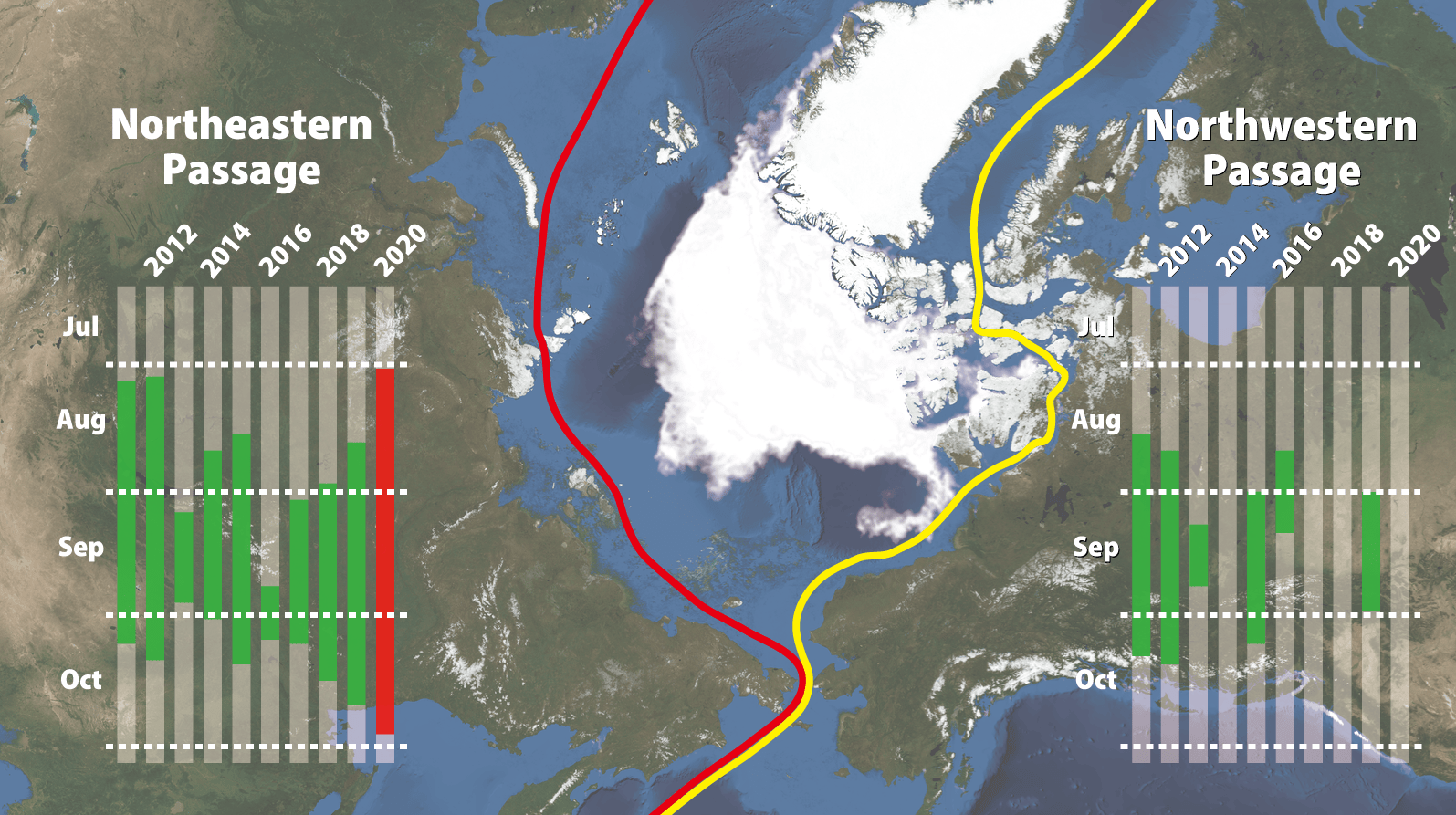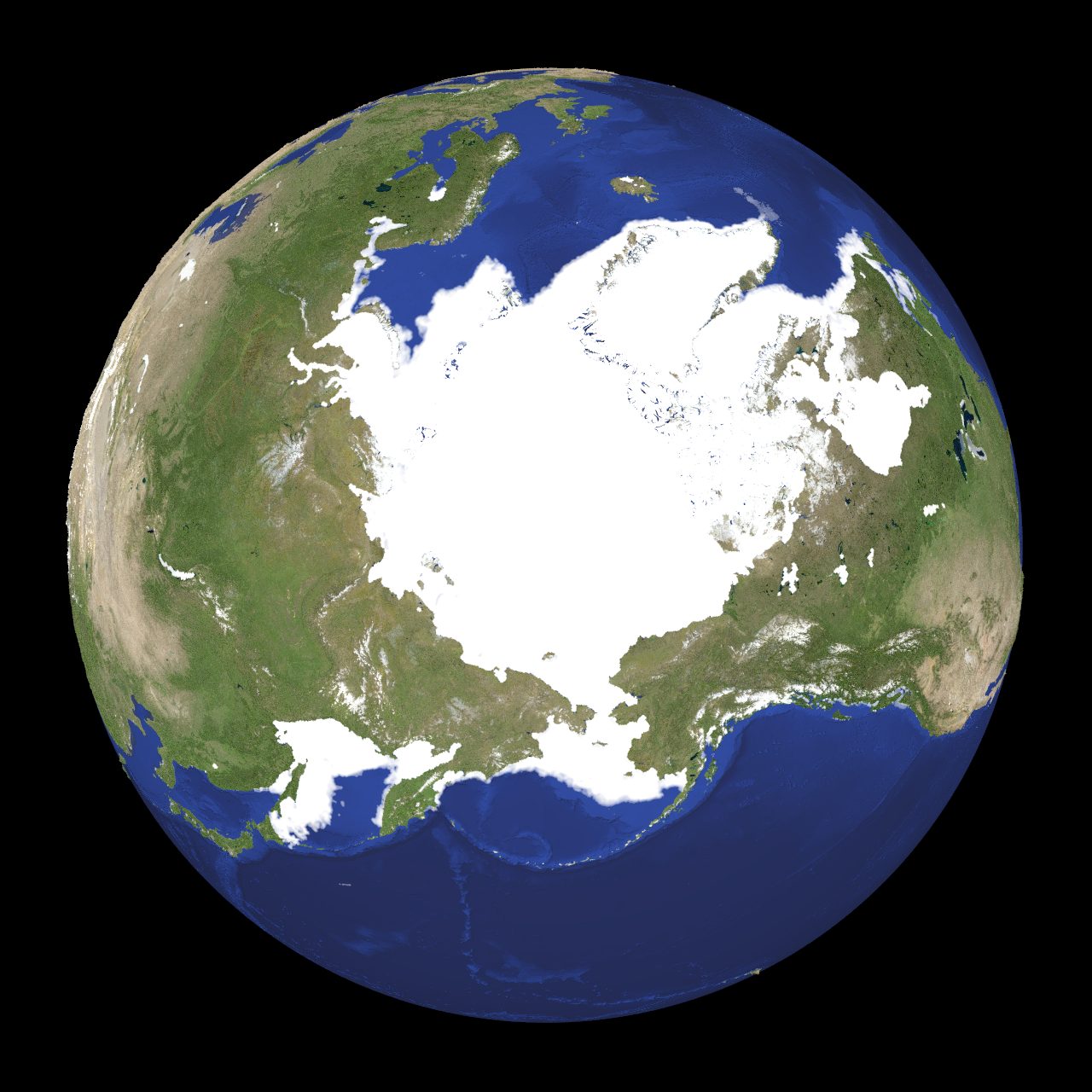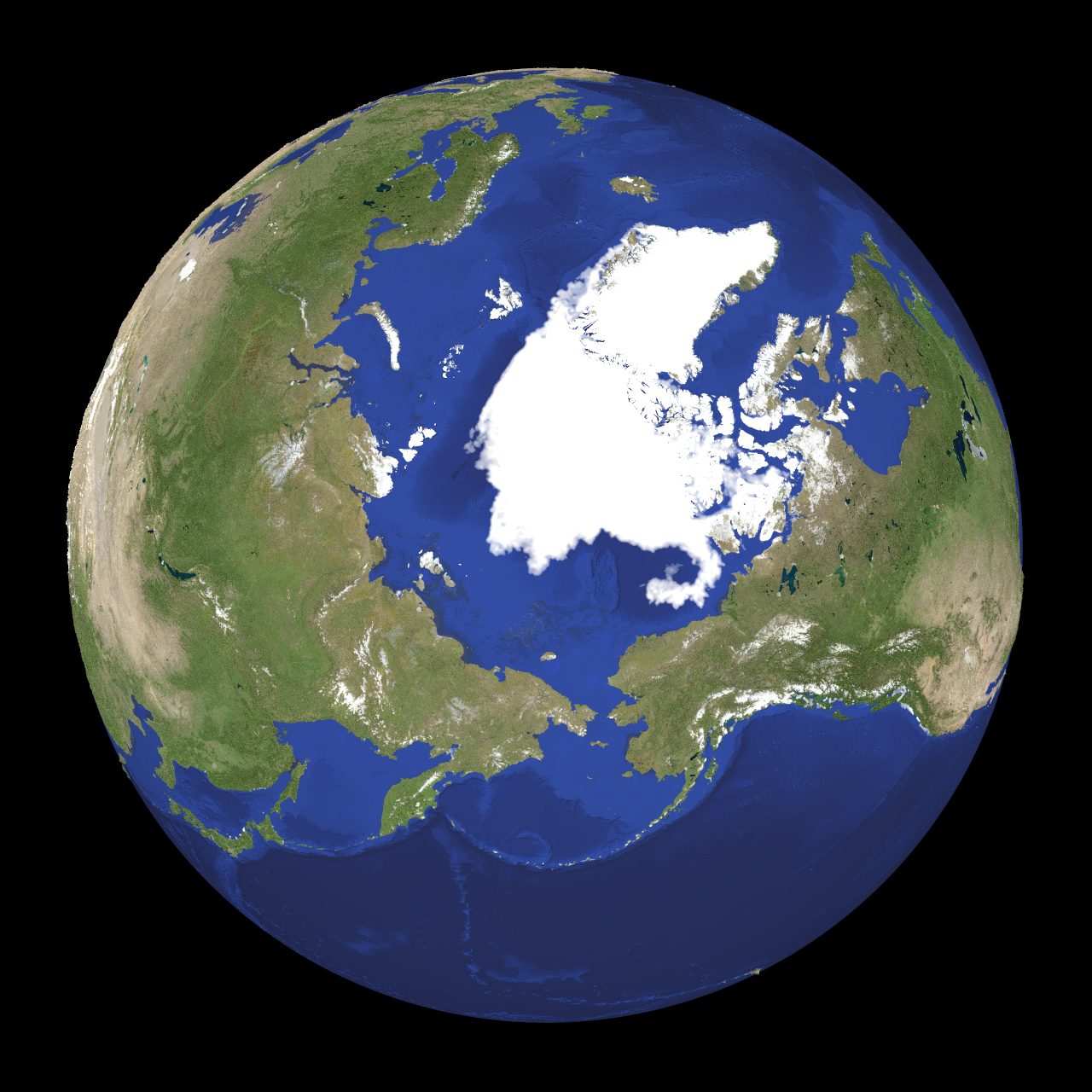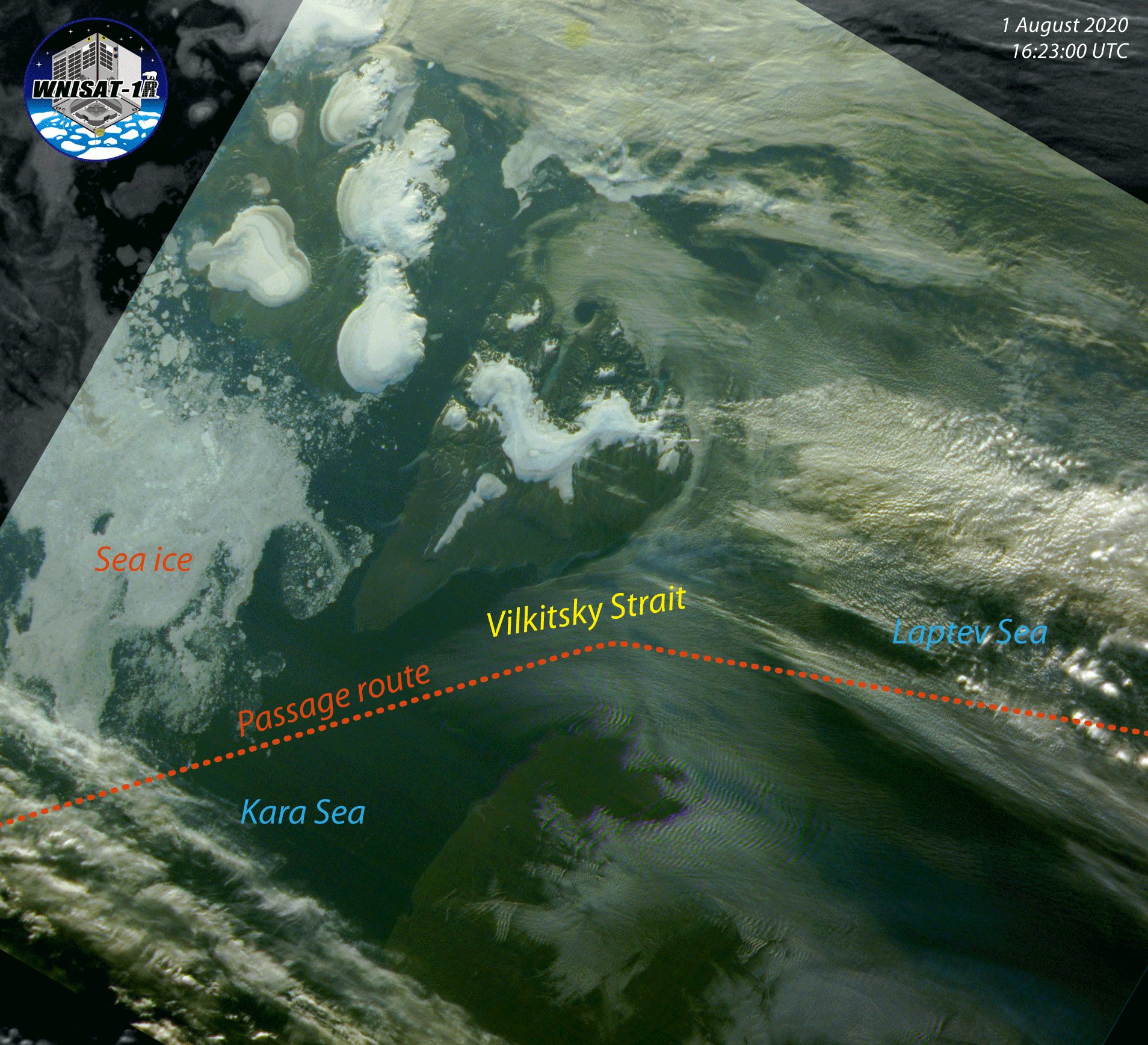News & Press Release
Weathernews Looks Back on Arctic Ocean Sea Ice in 2020
Summer Heat Results in the Second Smallest Sea Ice Area on Record
Longest Recorded Open Period for the Northern Sea Route
Shipping >Weathernews Inc. Global Ice Center announced its review of Arctic Ocean ice conditions during 2020. Sea ice is usually at its peak surface area in February or March of each year, and at its smallest in September. This summer, the Arctic region saw record-breaking heat, and the sea ice area around Russia decreased more significantly than usual. In addition, the year's smallest sea ice area was observed in September, at 3.55 million square kilometers, which was the second smallest since the start of observations in 1979.
The Northeast Passage (Russian side) of the Northern Sea Route (NSR) was open (*) this year for 88 days the longest period it has ever stayed open. On the other hand, the Northwest Passage (Canadian side) did not open this year.
For voyages between Asia and Europe, using the NSR reduces not only transportation costs but also CO2 emissions. Since 2011, Weathernews has provided Polar Routing Service to support the safe operation of vessels navigating the Arctic Ocean. Going forward, we will continue to support the safe navigation of vessels through the Northern Sea Route, while also supporting the reduction of CO2 emissions.
* Definition of "open": A state in which the entire route can be traversed without entering any areas affected by sea ice, according to satellite data.

Northeast Passage (Left) and the Northwest Passage (Right)
Record-breaking summer heat caused historical long opening of the Northeast Passage
This summer the Arctic experienced record-breaking high temperatures, accelerating the melting of sea ice. According to the Colorado State University, the average temperature in May, July and August north of 70°N was the highest on record, and the average temperature in June was the second highest on record. Also, in Verkhoyansk, which is located in the Russian Far East, the highest temperature was observed at about 38 ° C in June, which is the highest on record. This high temperature region also spread to the Russian coast of the Arctic Ocean, accelerating the melting of sea ice that had spread there. In July, the temperature tended to increase even over the Arctic Ocean, and the highest temperature since the start of observations in 1979, 21.7 ° C, was observed in Longyearbyen in the Svalbard Islands.
Due to such high temperatures in the Arctic, the sea ice area minimum was 3.55 million square kilometers on September 13. This was the second smallest sea ice area recorded since observations began in 1979, next to the record set in August 2012, which was influenced by a large-scale cyclone that developed over the Arctic Ocean.
As a result of the melting of sea ice progressing faster than usual in the Laptev Sea and East Siberian Sea, which borders Russia, the Northeast Passage (Russian side) opened up on August 2, which was the earliest on record. The proprietary meteorological and oceanographic satellite WNISAT-1R, which was launched by Weathernews in 2017, was able to clearly confirm that there was no sea ice in the Vilkitsky Strait, and the Northeast Passage was open on August 1. The Northeast passage remained open until October 28. It was open for 88 days, the longest period it has ever stayed open. On the other hand, the Northwest Passage (Canadian side) did not open this year due to sea ice remaining in the straits of the Canadian archipelagos.

Minimum areas of Arctic Ocean sea ice in the summer period (in ascending order)
Area of Arctic Ocean ice extent (yearly minimum value) | ||
1st | 3.18 million km2 | (2012) |
2nd | 3.55 million km2 | (2020) |
3rd | 3.96 million km2 | (2019) |
4th | 4.02 million km2 | (2016) |
5th | 4.07 million km2 | (2007) |
6th | 4.26 million km2 | (2015) |
The numbers are recalculated using the latest methodology, and some years may differ from previously published press releases.
*Recorded since 1979, 2019 is a prediction
 (Proprietary analysis image using the AMSR2 microwave satellite) |  (Proprietary analysis image using the AMSR2 microwave satellite) |
Weathernews supports safe navigation through the Northern Sea Route and helps reduce CO2
Regular use of the NSR has increased in recent years, and LNG carriers are actively transporting liquefied natural gas produced in the Arctic Ocean. For ships traveling between Asia and Europe, taking the NSR reduces the travel distance to about two-thirds that of traveling via the Suez Canal, and around half that of sailing via the Cape of Good Hope.
Since 2011, Weathernews has provided Polar Routing Service to support the safe operation of vessels in the Arctic Ocean. In 2020, we provided support for 6 voyages, contributing to an emissions reduction of approximately 3,600 tons of CO2*, compared to when the ships traveled via the Suez Canal.
* The calculation is based on IMO guidelines (MEPC .1/Clrc.684).

Time: Aug-1 16:23 UTC
We are able to clearly confirm that there was no sea ice in the Vilkitsky Strait.